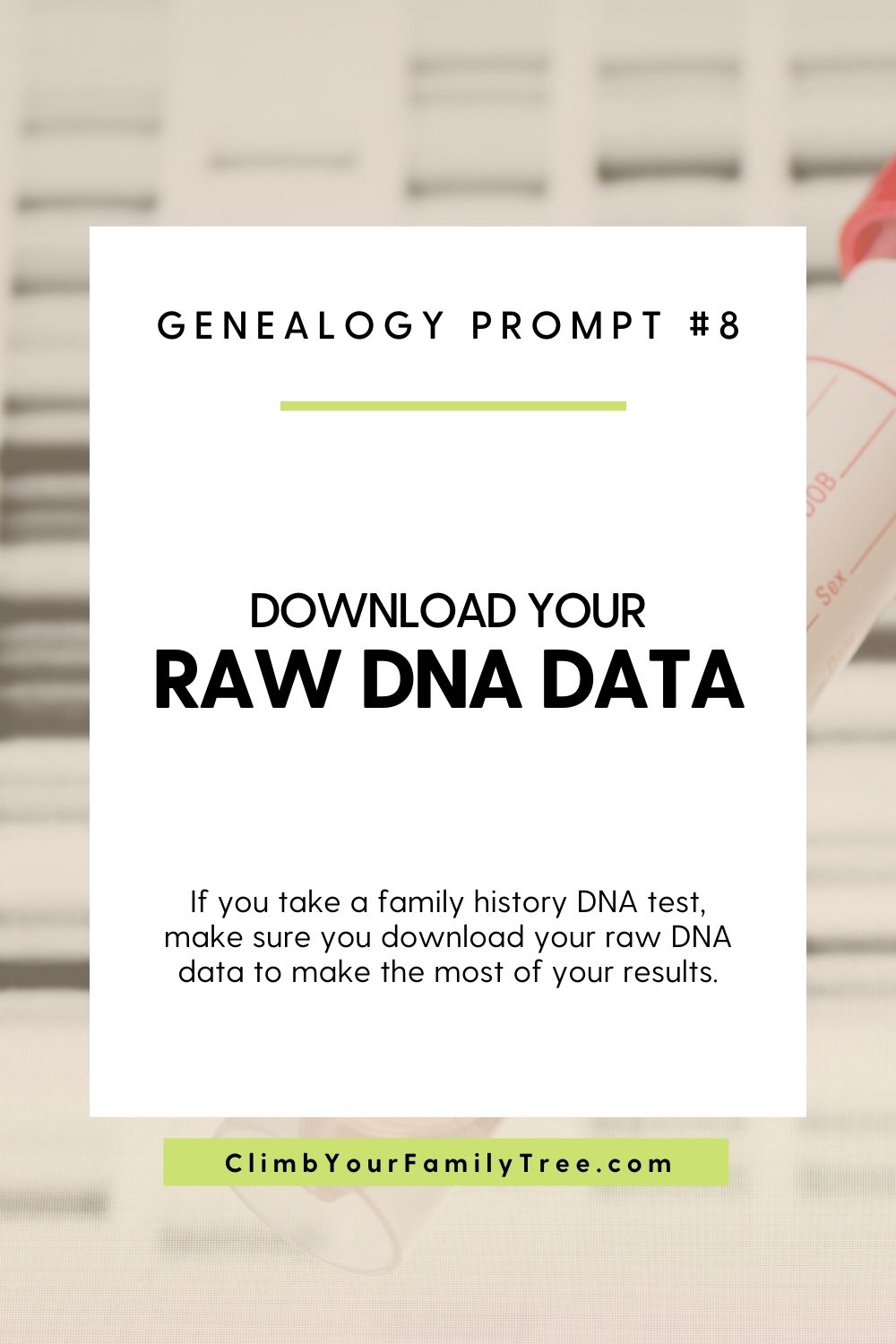
Have you ever taken a DNA test for genetic genealogy, such as to learn more about where your ancestors came from? If so, the service you used likely has a raw DNA data file you can download.
For this week’s genealogy prompt, let’s take a quick look at what raw DNA data is in relation to family history DNA kits and why you should download a copy for yourself.
What is Raw DNA Data?
When you submit a DNA sample using a family history DNA kit, like Ancestry DNA or 23 & Me, a raw DNA data file is created. You don’t see this information directly.
Instead, it’s the underlying data the service uses to determine your ancestry and other information provided in their report or dashboard. In other words, it contains the details of your genetic variants (or at least the ones tested).
These services generally enable you to download your raw DNA data however. And doing so is a good idea.
Reasons to Download Your Raw Data File
Why might you want to download a copy of your raw DNA data file? Here are some good reasons:
- It provides you with a backup of the data should your service ever lose it.
- After downloading your raw data file, you can import it into third-party services that can offer insight a family history site might not.
- If you choose to request the removal of your DNA data from the service you used, downloading that data allows you to retain a backup of what you paid for.
Speaking of third-party services, why might you want to upload your DNA data to them?
What You Can Learn from Your Raw DNA Data
There are a variety of third-party sites where you can upload DNA data. Some are free. Some are premium.
Here are some things you can learn by uploading your raw DNA to third-parties:
- Health data (such as genetic variations that put you at higher risk for certain conditions)
- General-interest data (such as variations that might impact your eye color, height, or other personal characteristics)
- Family history / migration data (likely different from estimations of the original service you used as each company uses its own data set to calculate likely migration information)
Pretty much anything influenced by genetic variations in your DNA can be pulled from your raw DNA data, as long as the genes you’re interested in were included.
It’s important to understand that family history DNA kits are often focused on parts of your DNA that are most likely to point to ancestry-related information.
They don’t generally include whole genome sequencing. This service is available, but it’s going to be much more expensive than the mass-market kits sold for family history research. Know what you’re actually buying.
Because of this, if you do submit your raw DNA to a third-party service like Promethease for health information, never panic about results you see. They can’t give you the full picture. If you have concerns about specific genes or mutations, you should bring them to the attention of your doctor.
Always download a copy of your raw DNA data file and store it in a safe place. After all, it’s your data and you paid for it. Whether you choose to use it elsewhere or not, it makes sense to store it in a safe place should you ever need it down the road.
